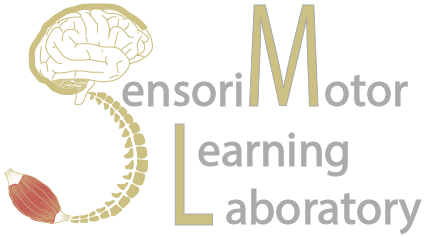Sensorimotor Learning Laboratory: Research Program
Our lab investigates how humans adapt their walking through the lens of biomechanics, neuroscience, and cognition, with a vision to improve mobility for clinical and everyday needs.
We blend fundamental research on neural control and learning with innovative technologies and real-world applications, striving to make discoveries that guide better rehabilitation and healthy aging. Our projects aim to answer the following questions:
- How does the brain and body adapt to new walking challenges?
- What cognitive processes shape motor learning and neurological health?
- How can breakthroughs in science translate to everyday movement and clinical care?
By bridging these questions, our program builds strategies for enhanced mobility and rehabilitation, connecting science to solutions for life’s movement challenges.
Summary of Research Program
Our research investigates human sensorimotor adaptation in walking, combining fundamental science with practical applications to improve mobility in both clinical and real-world settings.
The work spans three interconnected research thrusts, reflecting a multidisciplinary approach to understanding and enhancing walking function across diverse populations.
Neuromechanics of Locomotor Adaptation
This thrust explores how the nervous system and biomechanics work together to adapt walking patterns.
Key areas of focus include:
- How muscle coordination is controlled and adjusted during locomotor learning.
- Adaptation of sensory inputs and motor outputs.
- Neural recalibration from spinal circuits to the prefrontal cortex
By linking biomechanical performance to neural control mechanisms, this work provides critical insights for identifying and addressing post-stroke gait deficits.
Motor-Cognitive Interactions in Walking
This thrust examines the role of cognitive processes in walking and how they influence motor learning across the lifespan.
Key questions include:
- How attention and cognition regulate motor adaptation.
- How aging impacts motor-cognitive interactions.
- How cognitive-related gait changes can serve as early markers for neurodegenerative diseases.
This research innovates by developing novel gait indices to assess cognitive health and by investigating the role of attention in walking.
Generalization of Walking Patterns
This thrust targets the challenge of transferring learned walking patterns to real-world situations, a critical step in locomotor rehabilitation.
Research focuses on:
- Identifying factors that limit movement transfer.
- Testing intervention tools, including motorized shoes and novel training settings.
- Creating computational models to predict and improve generalization.
The ultimate goal is to design strategies that enhance rehabilitation outcomes and support better daily mobility.

